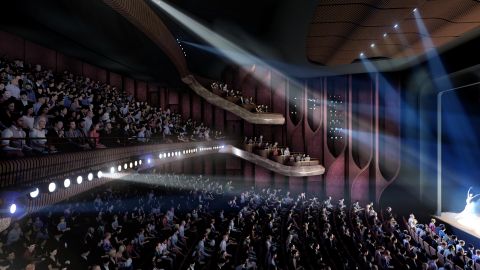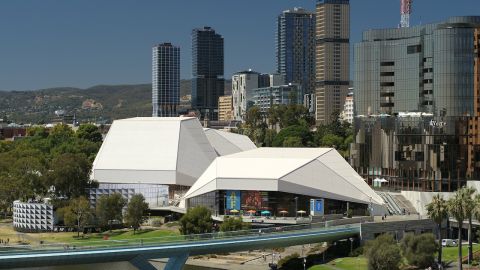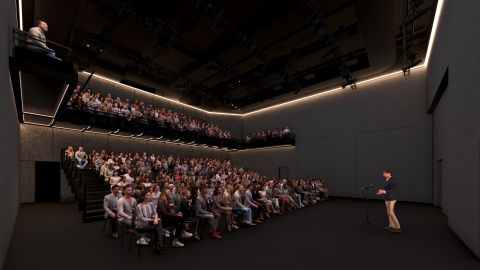Sydney’s Theatre Royal Glitters Again
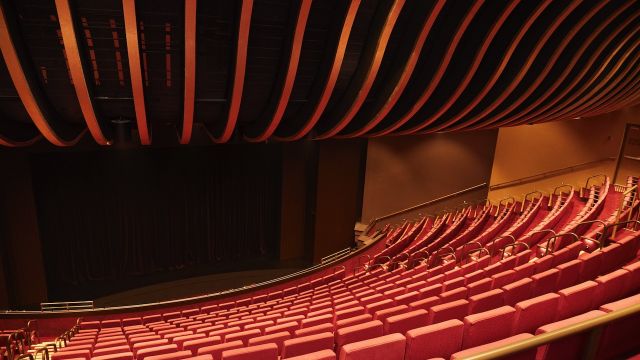
As the curtain rises at Sydney’s rejuvenated Theatre Royal, Tim McFarlane, Executive Chairman of Trafalgar Entertainment, the venue’s new operators, speaks to Neil Litchfield.
Once again, Sydney’s CBD risked losing the last active link to its once thriving theatre heartland.
Once again?
In the late 1960s and 1970s, Sydney’s developers and their cronies wrought greater havoc on Sydney’s historic theatres than Hitler’s Luftwaffe ever inflicted on London’s West End, with wreckers’ balls bringing the curtain down on nearly every remaining commercial live theatre built in the city during the previous century.
The original 19th century Royal was demolished in 1971, hot on the heels of the 1969 destruction of the Tivoli (1911), with the Palace Theatre (1896) sacrificed for the Sydney Hilton, then the 1971 loss of the St James Theatre, which opened in 1926 with the Australian Premiere of the musical No, No, Nanette.
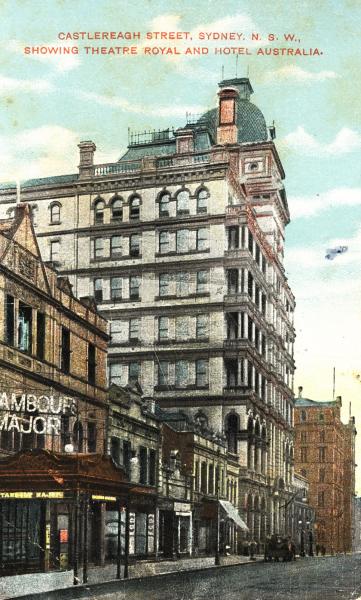 Image: Sydney's original Theatre Royal in the 19th Century.
Image: Sydney's original Theatre Royal in the 19th Century.
Meanwhile Melburnians still enjoy shows in their beloved Princess, Her Majesty’s and Comedy theatres.
Dating to 1976, the newly restored Theatre Royal - designed by Harry Seidler - was built as a concession by the developers of the MLC Centre, after the protests and union activism aimed at preserving the historic theatre had failed.
Yet recently the modern Royal has sat dark for years, permanent closure a real possibility. The new owners of the complex felt no obligation to honour that agreement.
Imminent conversion to a food court, or retail space, was rumoured.
Only intervention by NSW Arts Minister Don Harwin eventually saw the theatre’s future secured by a long-term NSW Government lease, with Trafalgar Entertainment stepping in to rejuvenate and operate the venue.
Fittingly, Trafalgar’s Executive Chairman Tim McFarlane has a long association with the Theatre Royal, dating back to his time at the Adelaide Festival Centre, which built the sets for the 1980s mega musicals which found their Sydney home at the Royal.
“The Adelaide Festival Centre had long association with commercial producers, particularly Cameron Mackintosh, which was my route into musical theatre, and from there I joined Andrew Lloyd Webber’s company, The Really Useful Group, for 18 years, which was all about producing his shows and opening up new markets, particularly in Asia,” Tim explains.
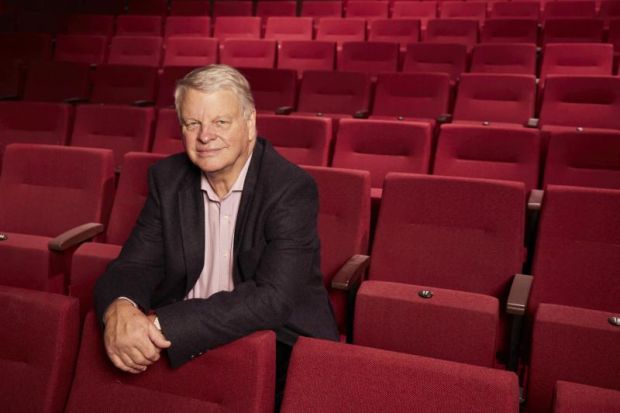 Image: Tim McFarlane sitting in the Theatre Royal. Photographer: Pierre Toussaint
Image: Tim McFarlane sitting in the Theatre Royal. Photographer: Pierre Toussaint
Tim subsequently moved on to the Ambassador Theatre Group, and then to Trafalgar Entertainment, with the Royal becoming part Trafalgar’s global vision.
“This is Trafalgar’s first theatre in this part of the world – the others are all in the UK, but there’s certainly an interest in Europe, America and the Asia-Pacific generally.”
Tim’s reminiscences of the Royal stretch back to his days at the Adelaide Festival Centre, when it built the sets for Cats, Les Mis and Phantom, and provided the original general management of Cats in Australia.
“My first memories of the Theatre Royal were sitting inside the auditorium while Trevor Nunn was directing the Australian production of Cats,” Tim recalls.
“From having come into theatre with no background in it, to suddenly being in the same room as people like Trevor Nunn, and Cameron Mackintosh was pretty amazing.
“It was such a new experience to be involved in such a prominent commercial production. I was a bit incredulous to be there at that time, watching all these amazing people working in the theatre. That production went on to be incredibly successful in the cities which it went to, involving people like Debra Byrne, the original Grizabella.
“The other amazing thing was looking at that set, and knowing it was built in Adelaide. Little marks of the people who had built the set were built into it, though not visible to the audience. That was a little bit of fun. Those original productions of Cats turned the entire auditorium into a rubbish dump, so it wasn’t just a set on stage.
“For that production, the ribbed ceiling, which was all gold-edged, saw the gold covered up with black felt to get that dark, rubbish dump feel. That felt has remained there until our current refurbishment. It’s been taken off, and it’s required a bit of touching up in places, but it’s largely the original gold, and it looks spectacular.”
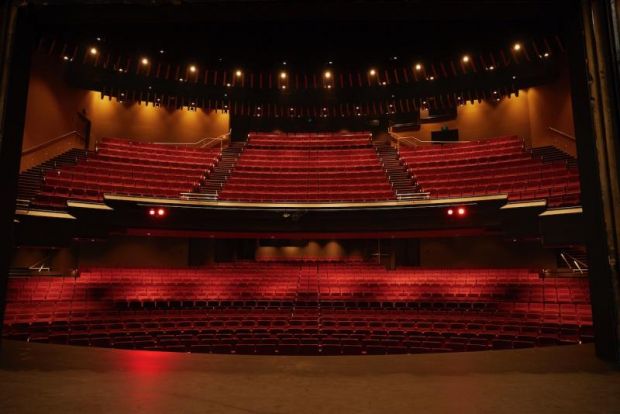
For another production Tim which was involved in, The Phantom of the Opera, the appearance of the theatre was also changed substantially, including the addition of boxes at each side of the proscenium.
“There were a lot of things done for Phantom which were not kind to the theatre,” Tim acknowledges, “but the current refurbishment has taken it back to its original bones, I’m pleased to say.”
During Tim’s association with the Royal, it has also had its share of off-stage drama.
“The opening night of Cats and all the drama, not only on the stage, but the bomb scare, with Prime Minister Hawke and everybody else having to be tipped out into the retail space of the MLC Centre,” he recalls. “That was quite a moment.”
The current Theatre Royal was built as a condition of demolishing the original 19th century Theatre Royal to make way for the MLC Centre, but the latest owners, Dexus, didn’t necessarily feel bound by that 1970s agreement. Just how close did it come to becoming a food court?
“There certainly seemed to be considerable doubt as to whether the theatre would be retained, and a lot of people in the industry became very vocal about the need to retain the Theatre Royal. Sydney has too few theatres as it is, and to have lost a theatre of that capacity would have been a huge void in Sydney. Obviously huge credit must be paid to Don Harwin, the minister, for the government’s role in making sure the theatre got retained.”
I asked Tim to talk me through the experience of visiting the new Theatre Royal, and I must say he whetted my appetite for my first visit there, to see the opening production, Jagged Little Pill.
“When you went to the theatre previously, coming off King Street it was quite a forbidding structure – like just a silo,” Tim reminds me. “The entrance and the foyers are all contained within a circular drum, on three levels, but the entrance used to be through a relatively small set of glass doors. About 120 degrees of that concrete façade has now been replaced with glass.
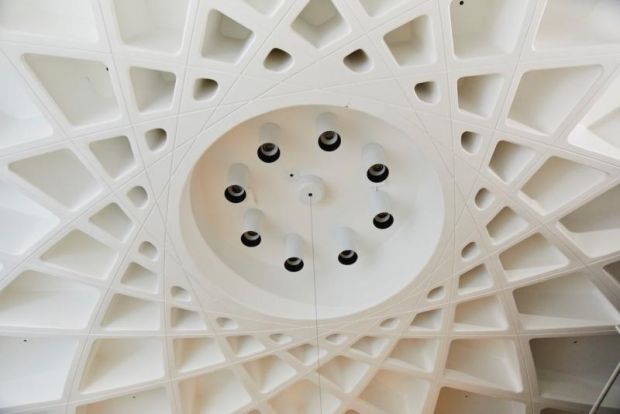
“Now, as you approach the theatre along King Street, you look into the foyers that you were never able to see from the street before. You see all the amazing design elements that Harry Seidler put into that drum – the sweeping stairs, the fabulous Nervi ceiling (designed by Italian engineer Pier Luigi Nervi) and hanging from it the Charles O. Perry sculpture, with the whole drum back to the colours that Harry envisaged – the drum is gold, the stairs are white, the floors are Travertine Marble. It is a beautiful approach to the theatre, with lots of artistic and architectural aspects to it which make it so spectacular.
“You might recall that when you went into the foyer, for Phantom, the whole box office was put inside the drum, which reduced the amount of public space. All of that has been ripped out, and it’s back to how it was originally constructed. So there’s a new position for the box office, and on that entrance level there’s a new bar.
“You go down the stairs to the stalls level, and all the facilities are different – the bars, the merchandise counter. All the toilets have been moved down a level and they’ve been more than doubled. So, it’s going to be so much easier to get a drink, and to go to the bathroom. There is now a lift connecting all the levels of the theatre, so it’s so much more accessible. And all the time with these dramatic colours, which were the colours that Harry Seidler wanted – red carpets, gold walls – then very modern facilities in the bars and the toilets.
“Going up the stairs to the dress circle, again there’s a totally new bar, with the same gold theme going up there and Travertine Marble in that little foyer area.
“The connecting of all those areas is just so much more dramatic than it’s ever been in the past.
“Then you go into the auditorium – re-carpeted, re-seated, the ceiling with its gold ribs now all exposed and restored. Looking down onto the stage you realise the incredible intimacy of this theatre. From the front of the stage to the rear of the dress circle is just 23 metres. That’s incredibly intimate and connected for a theatre.
“And the seats are so much more comfortable than they have been in the past.
“We’ve added another row to the front of the Dress Circle, and you really feel you can touch the stage from there.
“The whole feeling is one of intimacy, comfort and beauty, then on to this great stage. The Theatre Royal has always had a fabulous stage – a stage big enough to fit Cats, Les Mis, Phantom. It can take good sized productions, while smaller, more intimate shows still have an incredible connection to the audience.”
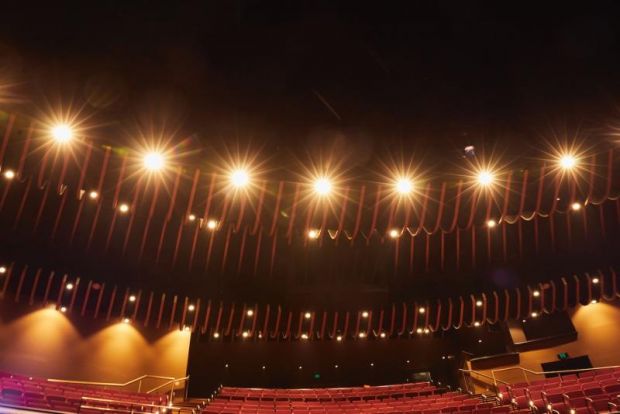
A key question running through my mind, and probably the minds of many a past audience member was, has the sound of trains running underneath the theatre, always so noticeable during performances, been dealt with.
“Without going into the details, I would challenge you to see whether you can hear the trains at all, or anything more than a very low rumble,” Tim assures me.
Whenever you renovate any building, from an old home to a theatre, there’s bound to be little surprises pop up in the process, as you peel back the layers. The Theatre Royal was no exception.
“In a theatrical sense, the thing that was pleasing and amusing to everybody came when all the ceilings in front of the proscenium were being replaced and ripped open. Attached to the structure of the roof was the steel structure from which the chandelier for The Phantom of the Opera was suspended,” Tim revealed. “It had remained hidden there for so long, along with other decorative plaster work that was put in above the proscenium to make it look more like the Paris Opera House. It was a bit of fun finding all that stuff that had been hidden away for all those years.”
Given the lengthy history of theatre on the site, stretching well back into the 19th century, I was interested to know if that heritage would be recognised in the current restoration.
“Given that the theatre, and the whole MLC Centre, dates from the mid 1970s, it’s a totally different. There is a wall at the rear of the theatre where it fronts onto Rowe Street (the remnant of the laneway which once ran all the way between Pitt and Castlereagh Street). A series of historic photos are going to be mounted onto that wall.
“My understanding is that the present location of the theatre’s stage is very similar to where the stage of the original theatre Royal was, except turned through 90 degrees.”
Outside the theatre’s front entrance, there’s a brand-new bookend to this Rowe Street heritage feature.
“Out on the King Street frontage, there will be three cylindrical digital signs promoting shows in the theatre or coming to the theatre – to my knowledge there aren’t any other cylindrical signs in Sydney.
“In front of the glass entry will be these three totems, as they’re described, which will be visible down to the Pitt Street Mall, and they will look fantastic.”
Post-script. If you’re keen for a glimpse Sydney’s 19th century theatre heartland, one heritage building remains, strikingly restored and repurposed. A block and a half away from the Royal, on Pitt Street, you can share a drink with theatre ghosts in the main bar of the Art House Hotel, formerly the auditorium of the Sydney School of Arts.
All images of the renovated Theatre Royal. Photographer: Pierre Toussaint
New Sydney Theatres
Foundation Theatres and The Star plan to transform the 4000 seat Event Centre at The Star, Sydney into a new two-theatre complex, helping to solve the city's shortage of large venues, which has sometimes seen it lose big shows to Melbourne.
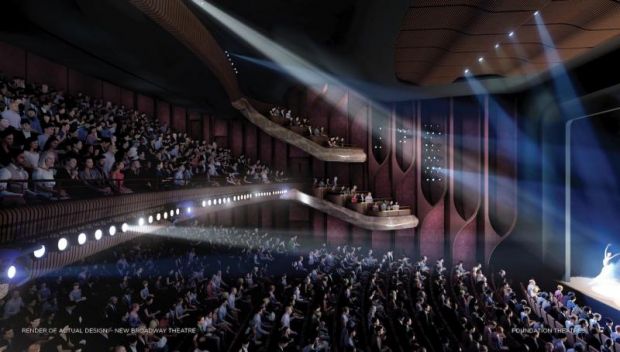 Image: the new 1500 seat Broadway style theatre
Image: the new 1500 seat Broadway style theatre
The new privately funded complex will feature a 1550 seat Broadway style theatre on two levels, capable of hosting large scale musicals, dance, drama, concerts, ballet and opera, with a full fly system and orchestra pit; and a 1000 seat comedy and live entertainment theatre capable of hosting comedy, live music, cabaret, plays and small-scale productions.
It is anticipated that the new complex will open in 2023.
Foundation Theatres says the 1550 seat theatre will have a stage and facilities that are capable of hosting complex productions, in a similar way to the existing Capitol Theatre and Sydney Lyric, which the company owns and operates.
The larger theatre will also have a more intimate configuration that can change to accommodate smaller audiences.
The Chief Executive Officer of Foundation Theatres Graeme Kearns told Stage Whispers that "instead of doing one, two, three or four productions a year, we will be doing 100 shows a year including comedy, cabaret, plays and small musicals", which will be staged in the 1000 seat venue.
A major push is also underway to restore the 1000 seat Minerva Theatre in Kings Cross, home of the original Australian production of Hair.

